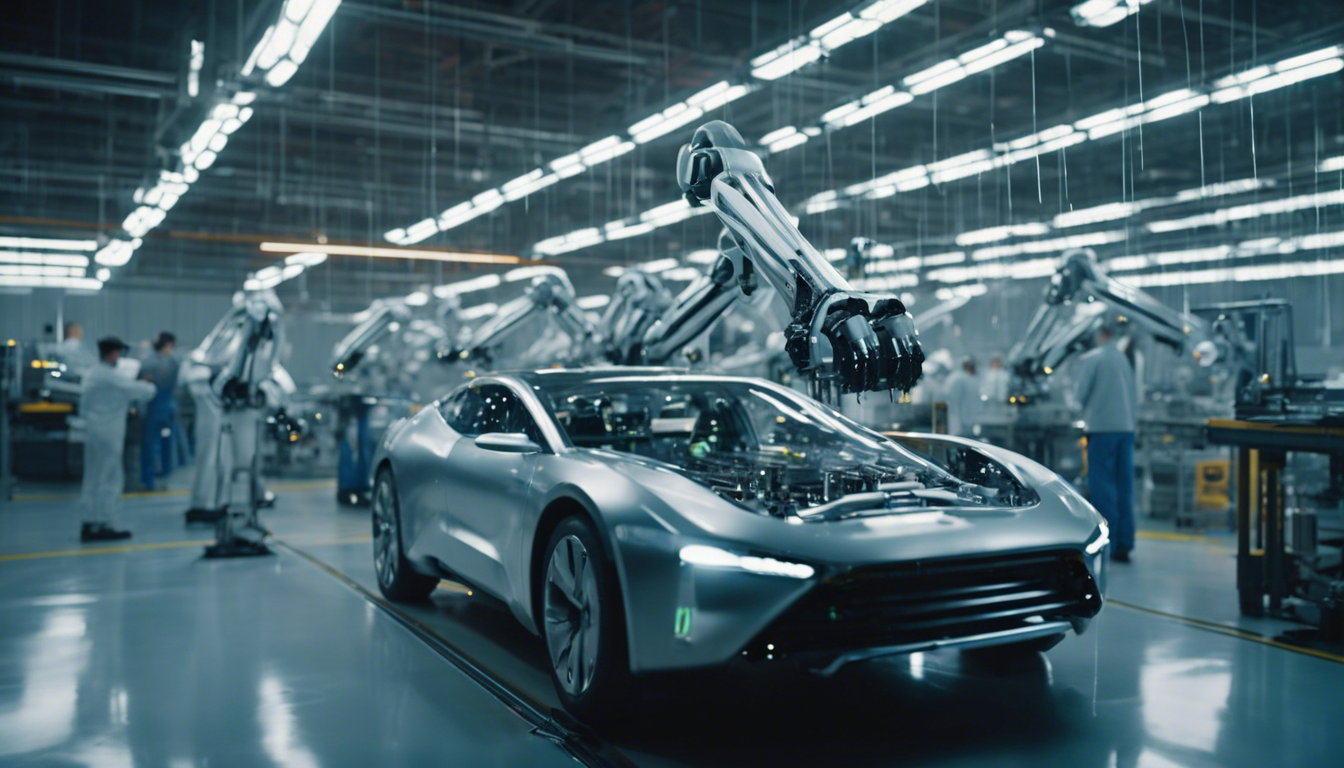Imagine you’re on a road trip. You’re on the highway, the sun is setting, and you’re cruising with your favorite music playing. But there’s one twist: you’re not driving. The car is. Welcome to the world of artificial intelligence (AI) in automotive technology, where the impossible becomes possible.
Yes, we’re talking about autonomous, but AI’s influence in the automotive industry goes way beyond that. From advanced safety features to smarter navigation, AI is revolutionizing the way we drive and interact with our vehicles. Let’s take a look at the top five AI advancements in automotive technology that are transforming our driving experiences.
Before we dive into the list, let’s first understand what AI is. In simple terms, AI is the branch of computer science that focuses on creating machines capable of intelligent behavior. In automotive technology, this means vehicles that can analyze, learn from, and react to their environment, just like a human driver would.
1. Autonomous Vehicles
First on our list is the poster child of AI in automotive tech: self-driving cars. Autonomous vehicles use AI algorithms to interpret data from a variety of sensors, including Lidar, radar, and cameras, to navigate roads, recognize obstacles, and make driving decisions.
Companies like Tesla, Google’s Waymo, and Uber’s Advanced Technologies Group are all developing autonomous vehicles. They’re still a work in progress, but every day brings us one step closer to seeing self-driving cars on our roads.
What’s the benefit, you might ask? Well, besides the sheer convenience of not having to drive yourself, autonomous vehicles have the potential to significantly reduce accidents caused by human error, making our roads safer. Now, isn’t that something to look forward to? Check out this video for a closer look at how self-driving cars work: How Does a Self-Driving Car See?
2. Predictive Vehicle Maintenance
Moving on, another AI advancement in automotive technology is predictive vehicle maintenance. AI can analyze data from various vehicle sensors to predict potential mechanical issues before they become serious problems.
For example, AI can detect when your brake pads are wearing thin, your tire pressure is low, or your engine is due for an oil change. The system will then alert you, allowing you to address these issues before they result in breakdowns or expensive repairs.
By preventing unexpected vehicle failures, predictive vehicle maintenance can save you money, keep you safe, and give you peace of mind. No more worrying about your car breaking down in the middle of nowhere!
3. Intelligent Traffic Management
Next up is intelligent traffic management. AI can analyze real-time traffic data to optimize traffic flow, reduce congestion, and improve road safety.
For example, AI can adjust traffic light timings based on current traffic conditions, helping to ease congestion. It can also predict traffic patterns and provide drivers with the fastest, most efficient routes to their destinations.
On a larger scale, intelligent traffic management can contribute to smarter, more sustainable cities by reducing traffic-related emissions and improving the efficiency of public transportation.
4. Enhanced Safety Features
Another major AI advancement in automotive technology is enhanced safety features. AI can analyze data from vehicle sensors to detect potential dangers and assist drivers in avoiding accidents.
For instance, AI can alert drivers when they’re drifting out of their lane, when there’s a vehicle in their blind spot, or when they’re at risk of colliding with the vehicle in front of them. Some systems can even take control of the vehicle to prevent accidents, such as automatically applying the brakes if a collision is imminent.
These advanced safety features can significantly reduce the risk of accidents, making our roads safer for everyone.
5. Personalized In-Car Experience
Last but not least, AI is enhancing the in-car experience by personalizing it to the driver’s preferences. AI can learn from the driver’s behaviors and habits to adjust various vehicle settings, such as seat position, music volume, and climate control, automatically.
AI can also integrate with other smart devices to provide a seamless, connected experience. For example, it can sync with your smart home system to turn off your lights when you leave the house or with your calendar to remind you of upcoming appointments.
So, whether you’re a music lover who likes to blast your tunes or a busy professional who needs to stay organized, AI can make your driving experience more enjoyable and convenient.
Conclusion
The future of automotive technology is here, and it’s powered by AI. From self-driving cars to predictive vehicle maintenance, AI is transforming the way we drive and interact with our vehicles. As AI continues to evolve, we can expect to see even more exciting advancements in the years to come.
So, next time you’re on that road trip, don’t be surprised if your car starts making some of the decisions. After all, it’s all part of the AI revolution.


